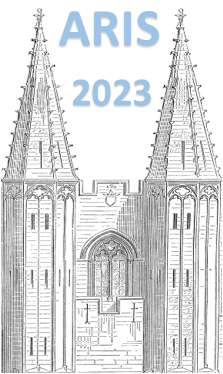Orateur
Description
Located at the neutron drip-line, $^{24}O$ is the heaviest doubly-magic isotope of the oxygen isotopic chain. As the $Q_\beta$ value increases and the neutron separation energy in the daughter nucleus decreases for the neutron-rich nucleus, beta-delayed neutron emission becomes a dominant decay mode, and neutron energy measurement is vital in studying the beta decay to the neutron unbound states. Also, spectroscopy of such drip-line nuclei may provide important information regarding the effects of nuclear interactions and many-body correlations in determining the limits of nuclear stability [1].
The neutron energy spectrum measurement of the beta-delayed neutron precursor $^{24}O$ was performed for the first time at National Superconducting Cyclotron Laboratory (NSCL) using a neutron time-of-flight array (VANDLE[2]) accompanied by gamma spectroscopy setup. New half-life and beta decay branching ratios are extracted. The beta-gamma and beta-delayed neutron measurements following the decay of $^{24}O$ provided the excitation energies and beta decay strength distribution to both neutron-bound and unbound states in $^{24}F$. The decay of "doubly-magic" $^{24}O$ is an excellent case to test the quality of the state-of-the-art calculations of the beta-decay strength distribution near the neutron drip line. The experimental results are compared with the shell model calculation using the standard, empirical USDB interaction, and state-of-the-art ab initio calculations such as those using the valence-space in-medium similarity renormalization group (VS-IMSRG), coupled cluster model or shell-model embedded in the continuum.
[1] T. L. Tang et al. Phys. Rev. Lett. 124, 212502 (2020).
[2] W. A. Peters et al., Nucl. Instrum. Methods Phys. Res. A 836, 122 (2016).

